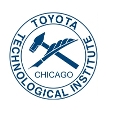
This benchmark is part of the ICCV21-Workshop: Segmenting and Tracking Every Point and Pixel.
The Segmenting and Tracking Every Pixel (STEP) benchmark consists of 21 training sequences and 29 test sequences.
It is based on the KITTI Tracking Evaluation and the Multi-Object Tracking and Segmentation (MOTS) benchmark.
This benchmark extends the annotations to the Segmenting and Tracking Every Pixel (STEP) task. To this end, we added dense pixelwise segmentation labels for every pixel.
In this benchmark, every pixel has a semantic label and all pixels belonging to the most salient object classes, car and pedestrian, have a unique tracking ID.
We evaluate submitted results using the Segmentation and Tracking Quality (STQ) metric:
- STQ: The combined segmentation and tracking quality given by the geometric mean of AQ and SQ.
- AQ: The class-agnostic association quality. Please refer to the above link for details.
- SQ (IoU): The track-agnostic segmentation quality given by the mean IoU of all classes.
More details and downloads can be found here:
The submission instructions can be found on the submit results page. Please address any questions or feedback about KITTI-STEP and its evaluation to
Mark Weber.
Important Policy Update: As more and more non-published work and re-implementations of existing work is submitted to KITTI, we have established a new policy: from now on, only submissions with significant novelty that are leading to a peer-reviewed paper in a conference or journal are allowed. Minor modifications of existing algorithms or student research projects are not allowed. Such work must be evaluated on a split of the training set. To ensure that our policy is adopted, new users must detail their status, describe their work and specify the targeted venue during registration. Furthermore, we will regularly delete all entries that are 6 months old but are still anonymous or do not have a paper associated with them. For conferences, 6 month is enough to determine if a paper has been accepted and to add the bibliography information. For longer review cycles, you need to resubmit your results.
Additional information used by the methods Online: Online method (frame-by-frame processing, no latency)
Online: Online method (frame-by-frame processing, no latency) Additional training data: Use of additional data sources for training
Additional training data: Use of additional data sources for training
Table as LaTeX | Only published Methods

 Online: Online method (frame-by-frame processing, no latency)
Online: Online method (frame-by-frame processing, no latency) Additional training data: Use of additional data sources for training
Additional training data: Use of additional data sources for training

